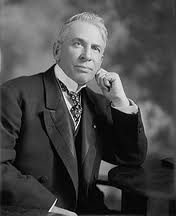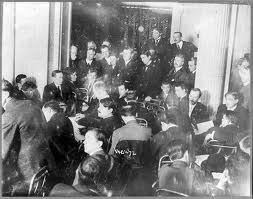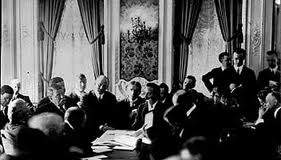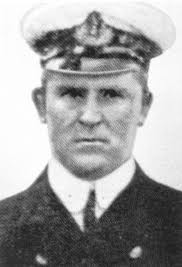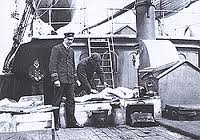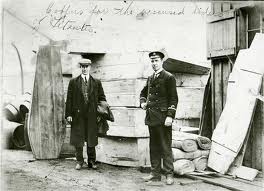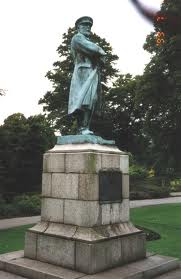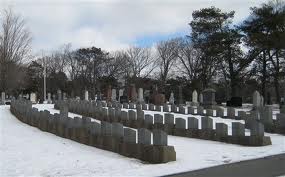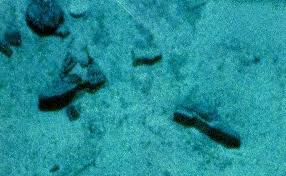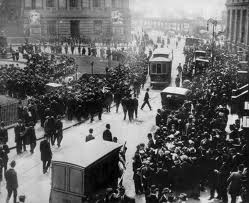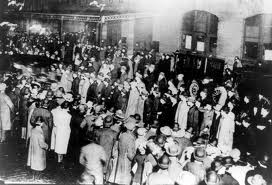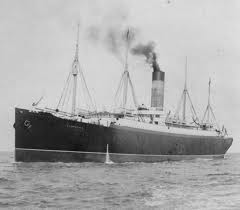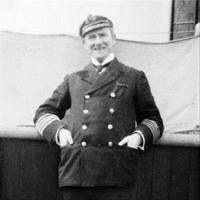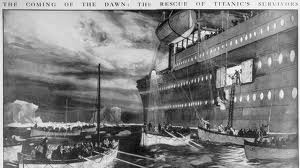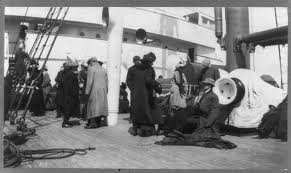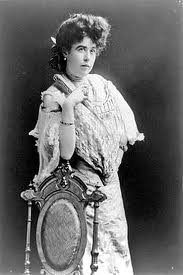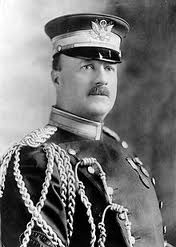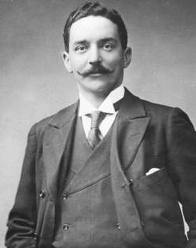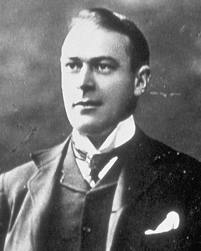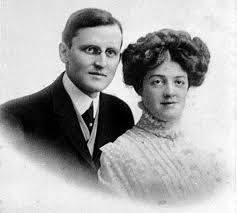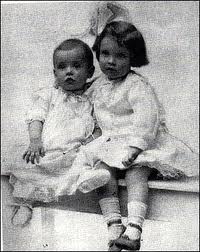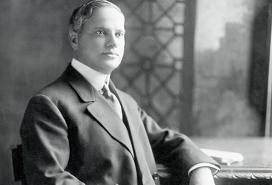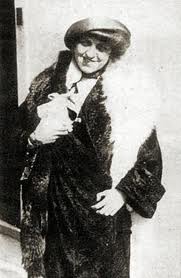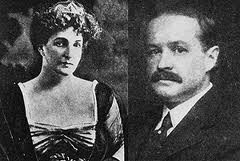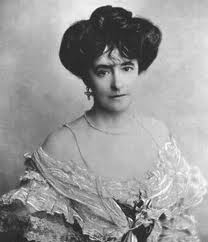Upon hearing of the Titanic’s sinking, Senator William Alden Smith called for an immediate investigation. The senate agreed to Smith heading a subcommittee to hear testimony.
One of the first aspects to catch Senator Smith’s attention was correspondence by Bruce Ismay to hold White Star’s RMS Cedric over so he and the crew could immediately return to England. One of these messages was: “Most desirable Titanic crew aboard Carpathia should be returned home earliest moment possible. Suggest you hold Cedric, sailing daylight Friday unless you see any reason contrary. Propose returning in her myself. Please send outfit of clothes, including shoes, for me to Cedric. Have nothing of my own. Please Reply. Yamsi” {Ismay backwards}
Senator Smith left Washington, DC and arrived in New York City as Carpathia was docking. He immediately spoke with Bruce Ismay, who was willing to cooperate.
The hearings began at 10:30am on April 19th at the Waldorf-Astoria Hotel {owned by John Jacob Astor}. Bruce Ismay was the first witness called. A week into the hearing the proceedings were moved to the new caucus room of the Russell Senate Office Building in Washington, D.C. They were the first hearings to be held in that room.

Included is a small sampling of Frederick Fleet’s Testimony:
Senator Smith: Did you make any request for glasses on the Titanic?
Fleet: We asked (for) them in Southampton (England), and they said there was none for us. . . .
Smith: You had a pair of glasses from Belfast to Southampton?
Fleet: Yes, sir, but none from Southampton to New York. . . .
Smith: Suppose you had glasses such as you had between Belfast and Southampton, could you have seen this black object (the iceberg) at a greater distance?
Fleet: We could have seen it a bit sooner.
Smith: How much sooner?
Fleet: Well, enough to get out of the way.
Testimony lasted for over seventeen days, ending on May 25th, with eighty-two witnesses called and over eleven hundred pages of testimony taken.
Issues covered included but were not limited to:
–confusion of crew
–weight capacity of lifeboats
–lifeboats not filed to capacity
–no boat drills for passengers
–why there were not enough lifeboats on board {due to outdated British Board of Trade Regulations}
–ice warnings not heeded
–ice warnings not properly posted
–Titanic trying to set a record
–Captain Smith was blamed for traveling too fast and not slowing down in ice
–failure of nearby ships to respond to the distress signals
–treatment of passengers in the different classes
–efforts to identify the mystery ship believed to be seen
Final testimony ended when Senator Smith visited Titanic’s sister ship, Olympic, to interview it’s crew. The Olympic was now in Port in New York.
The final report was published on May 28th. Senator Smith and the American Senate Investigation was criticized in Britain for their lack of knowledge concerning shipping and sometimes foolish questions.
Here is a portion of the testimony of Second Officer Lightoller, as he was questioned by Thomas Scanlan:
Scanlan: “Although there were abnormal difficulties you took no extra precautions whatever.”
Lightoller: “Have I said so?”
Scanlan: “In view of the abnormal conditions and of the fact that you were nearing ice at ten o’clock, was there not a very obvious reason for going slower?”
Lightoller: “Well, I can only quote you my experience throughout the last twenty-four years, that I have been crossing the Atlantic most of the time, that I have never seen the speed reduced.”
Scanlan: “Is it not quite clear that the most obvious way to avoid it is by slackening speed?”
Lightoller: “Not necessarily the most obvious.”
Scanlan: “Well, is it one way?”
Lightoller: “It is one way. – Naturally, if you stop the ship you will not collide with anything.”
Scanlan: “What I want to suggest to you is that it was recklessness, utter recklessness, in view of the conditions which you have described as abnormal, and in view of the knowledge you had from various sources that ice was in your immediate vicinity, to proceed at 21 ½ knots?”
Lightoller: “Then all I can say is that recklessness applies to practically every commander and every ship crossing the Atlantic Ocean.”
Scanlan: “I am not disputing that with you, but can you describe it yourself as other than recklessness?”
Lightoller: “Yes”
Scanlan: “Is it careful navigation in your view?”
Lightoller: “It is ordinary navigation which embodies careful navigation.”
Immediately upon the end of the American Senate Investigation, Bruce Ismay and the Titanic crew returned to England. There they appeared before the British Inquiry, conducted by the British Board of Trade. Due to their own outdated laws, there were few repercussions. Lord Mersey presided over the hearings with several experts. The hearings were opened in the Wreck Commissioner’s Court, Royal Scottish Drill Hall, Buckingham Gate, Westminster, on 2nd May, 1912. Ninety-eight witnesses were questioned during May and June. The final report was published towards the end of July. The employees of the White Star Line have been noted as trying to avert any testimony that would damage the shipping line and Captain Smith. The British Inquiry cleared Captain Smith and the White Star Line of any negligence in the loss of the Titanic. There are over eight thousand pages of documents on the Titanic with the British Board of Trade. One very important piece is “Correspondence dealing with the original plans of the Titanic, showing the ship was originally to be fitted with 32 boats. This would have given capacity for over 2,000 people, significantly greater than the 1,178 that were ultimately provided for.”
Both inquiries placed little blame on anyone. Senator Smith did blame Captain Smith for not slowing down in those ice conditions. The British inquiry stated that “maintaining speed and course in such conditions was common practice.”
Both inquiries blamed Captain Stanley Lord of the Californian. Stating “could have rescued all aboard the Titanic if he had taken immediate action to steam towards the liner firing the distress rockets.”
Both investigations presented recommendations for safer travel. Including:
–regular lifeboat drills
–twenty-four hour radio watch on every liner
–all ships accommodate lifeboats for everyone on board
–ship construction should feature watertight decks
— transverse and longitudinal watertight bulkheads as well as high double bottoms
–speed should be reduced in fog, ice or other zones of possible danger
After the inquiries many first class male passengers came under scrutiny for surviving, especially J. Bruce Ismay and Sir Cosmo Duff Gordon.
The Titanic disaster also led to the following changes:
1914 establishment of International Convention for the Safety of Life at Sea
International Ice Patrol established
The Titanic disaster marked the end of the Edwardian Era. The general feeling of confidence ended, including faith in technology. The rich began to question the meaning of their wealth and the chivalry seen the night of the sinking has not been seen since. Nobody believed in an unsinkable ship after the Titanic disaster.
Note: James Cameron used the Senate Records when writing his script for the hit movie, Titanic. Mr. Cameron has written. “Those scenes in my film are scripted and staged precisely as the event was described by witnesses.”
